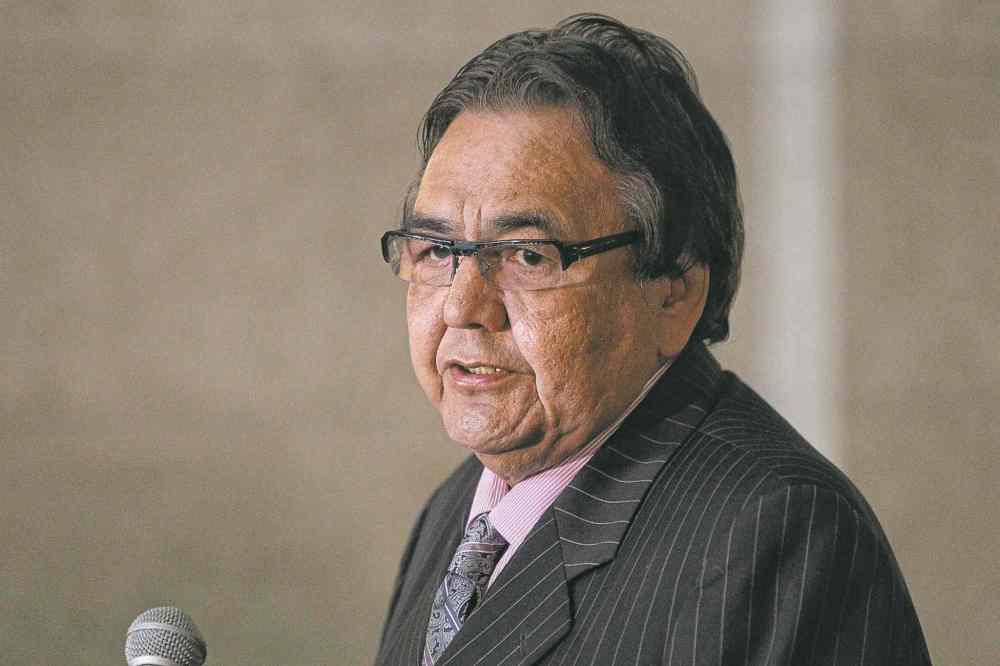Bands, province tackle flooding issues
Sign memorandum of understanding for compensation, returning people home
Advertisement
Read this article for free:
or
Already have an account? Log in here »
To continue reading, please subscribe:
Monthly Digital Subscription
$0 for the first 4 weeks*
- Enjoy unlimited reading on winnipegfreepress.com
- Read the E-Edition, our digital replica newspaper
- Access News Break, our award-winning app
- Play interactive puzzles
*No charge for 4 weeks then price increases to the regular rate of $19.00 plus GST every four weeks. Offer available to new and qualified returning subscribers only. Cancel any time.
Monthly Digital Subscription
$4.75/week*
- Enjoy unlimited reading on winnipegfreepress.com
- Read the E-Edition, our digital replica newspaper
- Access News Break, our award-winning app
- Play interactive puzzles
*Billed as $19 plus GST every four weeks. Cancel any time.
To continue reading, please subscribe:
Add Free Press access to your Brandon Sun subscription for only an additional
$1 for the first 4 weeks*
*Your next subscription payment will increase by $1.00 and you will be charged $16.99 plus GST for four weeks. After four weeks, your payment will increase to $23.99 plus GST every four weeks.
Read unlimited articles for free today:
or
Already have an account? Log in here »
Hey there, time traveller!
This article was published 06/01/2016 (3598 days ago), so information in it may no longer be current.
Several Interlake First Nations have banded together to sign a memorandum of understanding with the province to tackle flooding issues on Lake Manitoba and Lake St. Martin.
The historic MOU is the first time seven Interlake First Nations have come to the table with the province to figure out how to move forward in terms of compensation, flood protection and returning 2011 flood evacuees to their homes, said Eric Robinson, Manitoba’s minister of aboriginal and northern affairs.
“We were just continuing to meet with no end result,” Robinson told the Free Press about the protracted negotiations between the province and First Nations over flood compensation. “This will hopefully bring some tangible results at the end of the day.”

Seven First Nations — Pinaymootang, Lake St. Martin, Little Saskatchewan, Dauphin River, Ebb and Flow, O-Chi-Chak-Ko-Sipi and Lake Manitoba — are named in the MOU, which was signed Tuesday by Robinson and chiefs from Pinaymootang, Lake Manitoba and Dauphin River. The other four chiefs were unavailable to sign Tuesday, but Robinson said they will sign the MOU later this week.
The MOU is not legally binding. It outlines how the seven First Nations are affected by the high water levels and have “been significantly affected by extreme flood conditions in 2011, with many members being evacuated from the communities.”
It states the two parties have reached an understanding they will participate in constructive discussions on issues such as Operation Return Home (the return of flood evacuees to permanent homes), settlement agreements for communities affected by the use of the Fairford River Water Control Structure and the $495-million deal to construct a flood outlet channel from Lake Manitoba and expand another one from Lake St. Martin.
The one-in-350-year flood in 2011 led to the evacuation of more than 7,000 people at the height of the flooding — most from the Interlake region.
As of June 2015, more than 1,900 people are still evacuated and more than 1,700 of those residents come from Lake St. Martin, Little Saskatchewan, Dauphin River and Pinaymootang.
Robinson noted while Ottawa and Manitoba have been working with those four First Nations for a comprehensive settlement agreement on the province’s use of the Fairford Dam and Lake St. Martin emergency outlet channel, the other three First Nations have been left out of the conversation.
‘We were just continuing to meet with no end result. This will hopefully bring some tangible results at the end of the day’
— Eric Robinson, Manitoba’s minister of aboriginal and northern affairs
In early 2014, the Selinger government announced a $100-million down payment to rebuild homes and infrastructure in those four Interlake First Nations. Robinson said no money has been identified for flood damage on the other three First Nations, but said “it has to be addressed.”
“Initially it (the first MOU) was only four bands, but this one now is broader; it takes into consideration the other Treaty 2 First Nations,” Robinson said. “They have to be a part of it and get into the consultation phase.”
Cornell McLean, chief of Lake Manitoba First Nation, said the MOU with the province has provided “hope” after almost five years of uncertainty. The 2011 floods ravaged his community, which is situated on the northeast shore of the south basin of Lake Manitoba, leading to the evacuation of 179 residents.
The biggest concern for his community is the 50 or more homes that remain unlivable after being infested with mould. The First Nation has an on-reserve population of about 1,000 and is located 170 kilometres northwest of Winnipeg.
“It’s like adding meat to the potatoes,” McLean said. “It opens the doors for us because we haven’t been treated fairly. Well, I shouldn’t say that. I have never even had the opportunity to meet with a negotiator in terms of my flood issues.”

The MOU also calls for the establishment of a flood liaison office, which will act as a communication liaison between the First Nations and the provincial and federal flood negotiators.
kristin.annable@freepress.mb.ca
History
Updated on Wednesday, January 6, 2016 7:33 AM CST: Replaces photo

